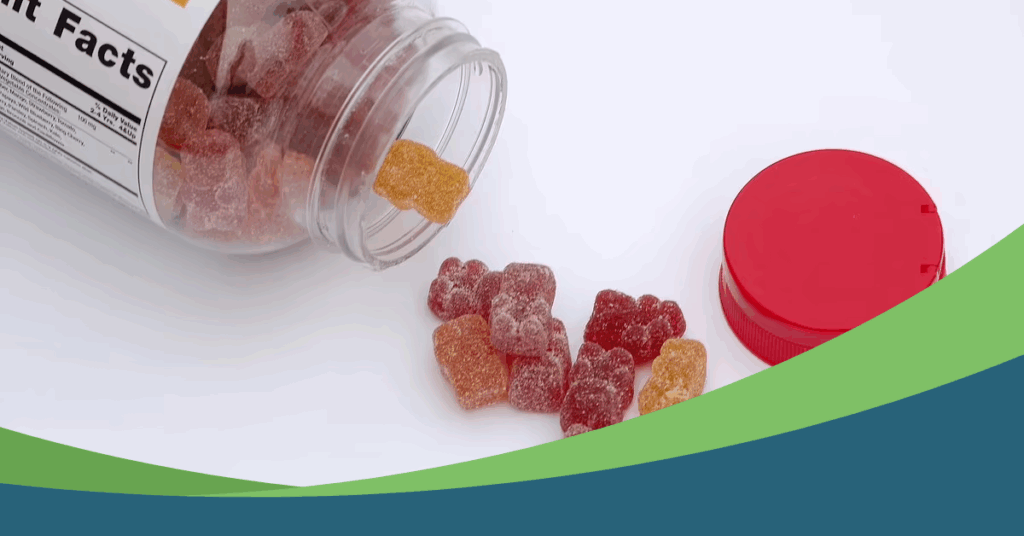In the highly regulated supplement industry, FDA compliance isn’t optional; it’s essential. Your Supplement Label Design is both a legal document and a trust-building tool. While attractive design elements may capture attention, the accuracy, structure, and alignment with FDA label rules determine whether your product meets regulatory standards and earns consumer confidence.
From ingredient listings to font size and placement, every detail on your supplement label must meet legal FDA regulations for label requirements. Done right, it ensures your brand avoids costly compliance issues and communicates transparency and integrity in a health-conscious marketplace.
What You Need to Know About FDA Compliance for Supplement Labels
Before your supplement earns consumer trust, it must pass regulatory scrutiny, starting with the label. FDA compliance goes beyond clean design; it requires that every element on your label meets strict federal guidelines. From font legibility and ingredient disclosures to placement of the Supplement Facts panel, each detail must follow supplement packaging compliance to ensure accuracy and transparency.
A label that looks polished but lacks legally required elements, such as proper disclaimers or allergen warnings, can damage credibility and compliance. On the other hand, a well-executed, FDA-compliant label reassures consumers that your product is not only legitimate but also safe. Your label isn’t just a brand tool but a regulated piece of communication. It must inform, meet legal label requirements, and reflect the trust your customers expect when choosing health-related products.
FDA Regulations and Legal Label Requirements
No matter how well-designed or attractive your supplement packaging may be, it must meet federal compliance standards to be legally sold in the United States. Under the Dietary Supplement Health and Education Act (DSHEA) of 1994, the U.S. Food and Drug Administration (FDA) regulates all dietary supplements and requires them to adhere to strict labeling requirements intended to protect consumer safety and ensure product transparency.
The FDA’s official guidance outlines that a compliant supplement label must include:
- A Supplement Facts panel that displays serving size, ingredient amounts, and percent daily values (when applicable)
- A complete list of ingredients, both active and inactive, using their standardized/common names
- Proper FDA disclaimers such as “The Food and Drug Administration has not evaluated this statement. This product is not intended to diagnose, treat, cure, or prevent any disease.”
- Allergen statements by the Food Allergen Labeling and Consumer Protection Act (FALCPA)
- Recommended use and dosage instructions are written in clear, understandable language.
- The name and business location of the manufacturer, packer, or distributor
- Compliance with formatting standards, including minimum font sizes, panel positioning, and contrast requirements under 21 CFR Part 101
These components can result in warning letters, import refusals, or product recalls. According to FDA enforcement reports, labeling violations remain among the most common reasons for dietary supplement regulatory action. Skipping or misplacing these elements is not only a legal risk—it can also damage your brand’s credibility. Poor placement of the Supplement Facts panel or unreadable disclaimers are among the most common Label Design Mistakes, often stemming from using non-specialized design teams.
Packaging Compliance That Goes Beyond the Basics
Today’s consumers demand more than compliance—they want transparency and reassurance. This is where supplement packaging compliance becomes a strategic advantage. Custom label design allows brands to highlight safety signals, like:
- “Made in a GMP-certified facility”
- “Non-GMO, Gluten-Free, Third-party tested”
- QR codes linking to batch-specific lab reports
These signals build trust, satisfy savvy consumers, and help meet global retail standards. Ensuring your product adheres to U.S. and international labeling standards can expand your market reach while minimizing risk.
Where Brands Go Wrong: Common Label Design Mistakes
Even well-intentioned supplement brands make errors that can cost them sales or trigger compliance issues. The most frequent label design mistakes include:
- Using marketing jargon instead of FDA-compliant language
- Crowded layouts with poor readability
- Missing or vague allergen information
- Overpromising claims without proper disclaimers
- Ignoring FDA formatting standards for Supplement Facts panels
These issues not only confuse buyers but also raise red flags with regulators. You can prevent these pitfalls by partnering with supplement manufacturing and packaging experts who understand design strategy and compliance.
How My Nutra Best Helps You Get It Right
At My Nutra Best, we manufacture supplements and support our partners through every step of the production process, including label development. Our team understands the fine line between creative branding and FDA-compliant labeling.
We help you avoid costly errors, highlight your unique selling points, and build packaging ready for both shelf and search. From formatting Supplement Facts correctly to integrating QR codes and safety seals, we ensure your label’s details are both legally sound and visually powerful.
Conclusion
A well-designed supplement label is more than a marketing tool; it’s a legal document, a trust builder, and a conversion asset. Combining strong visual design with regulatory accuracy will help your label stand out in a crowded market while protecting your business. Let My Nutra Best be your partner in creating labels that work for regulators, shoppers, and search engines alike.



